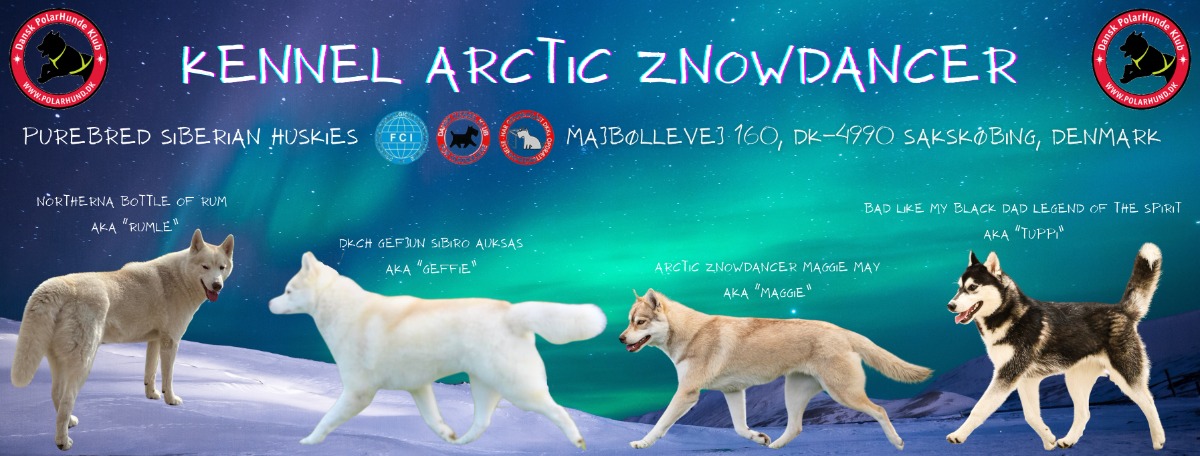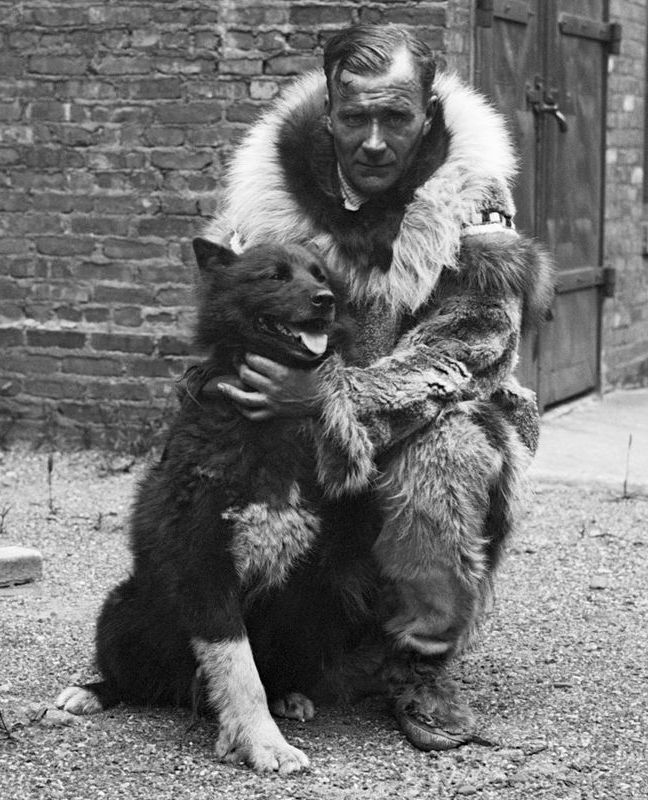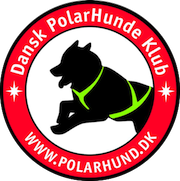

Of all the dog breeds in the world, the Siberian Husky is probably the one that most resembles a wolf in its physical appearance. The breed originates from eastern Siberia in Russia, where it was bred as a working dog of medium size, i.a. to pull sleds across the snow.
A Siberian Husky is active, energetic and hardy - traits that were vital in the extremely cold and harsh Arctic Siberia, where it was bred by the Chuckchi people. At the same time as the Nome golden race, the Siberian Husky was imported to Alaska as a sled dog, where the breed quickly became popular and spread across both Canada and the United States, where it was later also used as a family dog and show dog.
Physical appearance
A Siberian Husky has many physical similarities with the Alaskan Malamute, which, however, is larger and more powerful built than the Husky. Siberian Husky has a thick double coat. They can have many different markings on the coat, usually with white paws and legs, markings on the face and on the tip of the tail. The most common colors are black / white, grey / white, reddish and white or completely pure white. A male dog typically weighs between 20 to 27 kg. and a bitch approx. 15 to 23 kg. The male dog is approx. 53.5 to 60 cm. high (to shoulder) and the bitch is approx. 50.5 to 56 cm.
Color variations in the eyes
A Siberian Husky can have brown, blue and green eyes. It is not uncommon for one eye to be brown and the other blue (bi-eyed), or for one or both eyes to be multicolored (brown, blue and / or green). All color variations in the eyes are approved for the breed.
A good insulating fur
A Siberian Husky coat has two layers, a thick undercoat and a longer outer coat (cover hair). The thick undercoat protects the dog from the harsh Arctic winters, but the coat also insulates the heat in the summer. The Husky is able to withstand temperatures as low as -50 to -60 degrees Celsius. Siberian Husky typically sheds twice a year, with all the undercoat falling off in large tufts. The coat is self-cleaning and insulating. A Siberian Husky fur must NEVER be cut, as it destroys the furs properties to withstand both cold and heat.
Temperament and curiosity
Due to the Huskys origins as a working dog, a Siberian Husky is bursting with energy and requires daily exercise and activation. A Siberian Husky is excellent as a family dog or sled dog, but it is completely unsuitable as a watchdog as it is friendly and accommodating to all strangers. A Siberian Husky does not usually attach itself to just one person. A Siberian Husky is gentle and lovingly minded. The Inuit used the breed to pull heavy sledges across the ice and to assist during the hunt. A Siberian Husky is both intelligent and teachable, but can be extremely stubborn, and is typically also quite self-willed - you can easily train with it - but typically it will decide for itself when to show the tricks it has learned.
The hidden wolf beneath the surface
Siberian Huskies have been described as a behavioral representative of the dogs ancestor - namely the wolf. Some of the similarities are that the Husky howls instead of barking and that the Husky has a very active and extremely strong hunting instinct that makes it very unsafe to walk a Siberian Husky without a leash. The Husky runs after any smell of prey and will kill a hare or the familys guinea pigs, chickens or anything else that moves and can be played with until it does not move anymore - then the husky loses interest and leaves the prey. A Siberian Husky also likes to dig, something that can normally be seen in the family garden. Siberian Huskies are also known to run away at the first opportunity, and climb over or dig under fences. Very few Siberian Huskies can be off-leash during walks, as they have a strong tendency to run after exciting smells and not necessarily come back when you call. If you want to have the husky in the garden, the garden must be fenced - preferably with a 180 cm high fence, which is dug min. 50 cm into the ground - so it can neither jump over nor dig under.
Siberian Husky throughout history
Siberian Husky, Samoyed and Alaskan Malamute are all dog breeds that are descended directly from sled dogs. DNA analyzes have shown that the mentioned breeds are among the oldest in the world. The word "Husky" comes from the Inuit, who were called "huskies" by the white settlers who made expeditions into the land of the Inuit. The word "Siberian" in the dog breed comes from the country Siberia, i.a. because Eskimos used sled dogs to cross the Bering Strait into Alaska (however, there is disagreement about this). With the help of the Siberian Huskies, entire peoples were able to not only survive, but to explore unknown, harsh and Arctic land. Admiral Robert Peary of the United States used the Siberian Huskies in his attempt to reach the North Pole.
Siberian Huskies were imported to Alaska in great numbers during the gold race in the early 1900s, where they were diligently used as sled dogs. Particularly noteworthy was the sled dog race "All Alaska Sweepstakes" a 657 kilometer long sled race from Nome to Candle and back again. As the Siberian Huskies were smaller than the previously used sled dogs, the Siberian Huskies immediately dominated the dograce.
On February 2, 1925, Gunnar Kaasen was the first to bring vital medical supplies back from Nenana to Nome (a distance of over 965 kilometers). In honor of Balto, who was the lead dog during the sleigh expedition, a bronze statue of Balto was erected in Central Park, New York. The plaque under the statue reads: "Dedicated to the indomitable spirit of the sled dogs, who brought vital medicine over six hundred miles to the afflicted Nome during the winter of 1925." The Siberian Huskies also served in the U.S. Army Arctic Search and Rescue Unit during World War II.
If you are considering acquiring a Siberian Husky, you need to know the following:
You get a dog that is:
- Medium size, beautiful and a nice temperament.
- Is happy and playful.
- Is athletic and loves outdoor activities especially in cold weather.
- Loves to run at full speed and pull sleds or carts (or bikes)
- Is friendly to strangers and usually also to other dogs (and most other 4-legged)
- It needs good exercise, training and activation already from puppy age.
- Can be destructive and howl a lot if the need for exercise is not met - or it gets bored.
- Strong hunting instinct that makes a Siberian Husky want to run after everything that moves and / or escapes, i.a. cats, mice, birds, chickens, hares, rabbits, deer, etc.
- Are extremely good "escape artists" and going on adventures on their own.
- Siberian Husky has a strong will, but is also a very loving dog that can be a perfect family dog and a perfect training partner.
- A Siberian Husky sheds VERY much at least twice a year - first all the undercoat in large tufts and then the cover hairs.


